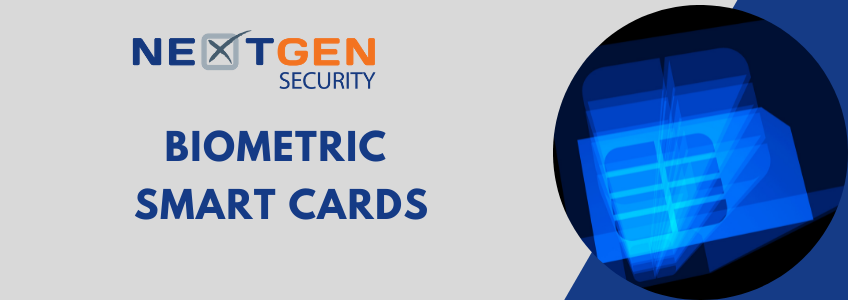Managing who can – and cannot – access your facility is a universal concern for enterprises everywhere. Letting authorized people in, and keeping unauthorized people out, is a key function of any access control solution.
Those solutions have evolved over the years. Many end users are opting to replace traditional methods – such as keypads, magnetic stripe prox cards, and key fobs that protect shared spaces – with biometric smart cards.
Simply stated, a biometric fingerprint smart card is a plastic card equipped with a microcontroller, which can store and process biometric and other user data internally. The microcontroller can receive requests from smart card readers and can verify identity or authenticate transactions. With biometric smart cards, in which matching of biometric data takes place on the card itself, the user never has to give up their biometric details to perform biometric authentication of identification. Combining smart card technology with biometrics provides the means to create a positive binding of the smart card (a difficult-to-clone token) to the cardholder, thereby enabling strong verification and authentication of the cardholder’s identity.
So, what makes this form of authentication for access so attractive to end users? Well, many things. For starters, biometric smart cards are more secure than standard cards. If a traditional access card is lost or stolen, it can get into the wrong person’s hands, and get them into a facility fraudulently. And, using smart card technology enhances privacy considerably in biometric ID systems. Biometrics are enrolled, stored and matched solely within the credential, safeguarding Personally Identifiable Information (PII).
The smart card provides the individual user with a personalized database, a personal firewall and a personal terminal. It secures that personal information on the card through advanced cryptography and digital signatures to prevent alteration or replacement of biometric data and to prevent cloning. This allows the individual to control access to their biometric information and eliminates the need for central database access during identity verification. When used in conjunction with biometrics, a smart card ID becomes even more personal and private, because a biometric provides a strong and unique binding between the cardholder and the personal database on the card, identifying the cardholder as the rightful owner of the card. Unlike a password or pin, the biometric can’t be borrowed, lost, or stolen.
Another key benefit is that storing the biometric template on a smart card enhances the system’s overall performance and user convenience by allowing local identity verification. The identity of an individual is established and validated at the time the smart card is issued and the individual has proven eligibility to receive the identity card. From that point on, the user’s identity is authenticated through the presentation of the smart card to a card reader, without the need to perform a search and match against a remote database over a network. This local processing reduces authentication time to one second or less, enabling faster security checks, and reducing the need for the card readers to be online with a central system
Together with our industry-leading biometric technology partner, NextGen is driving a new paradigm of converged biometric security and shifting away from relying on legacy form of identification to the use of biometrically authorized identification. Call on us today to see how we can upgrade your legacy access control solutions to an even more secure, sophisticated and convenient one.

